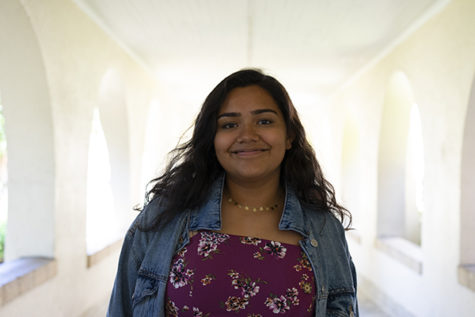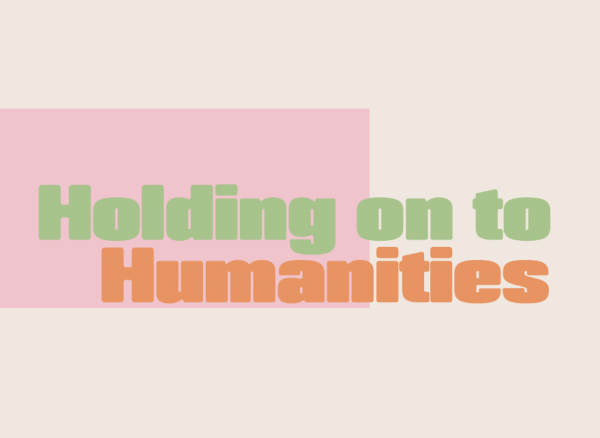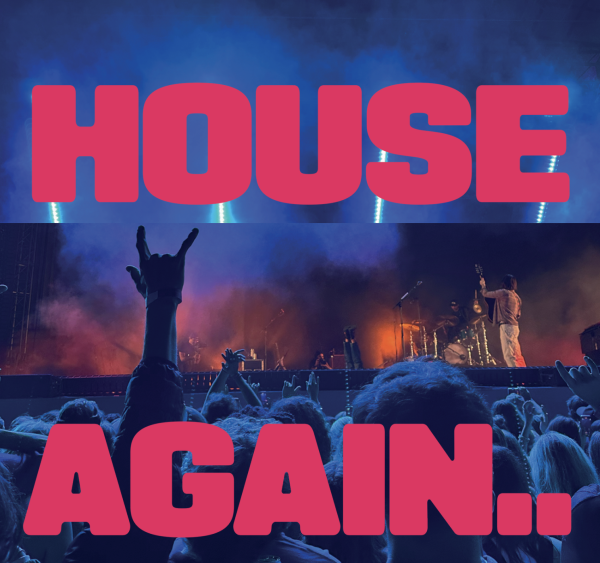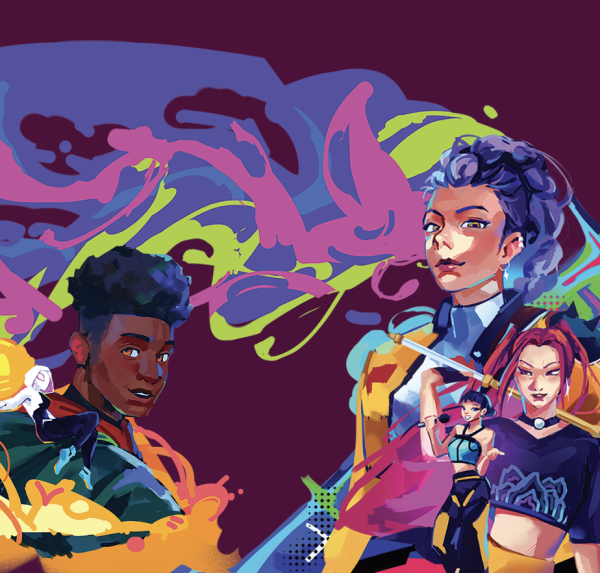The Hidden Aftermath
Dark aspects of the past are often covered up, giving the world an incomplete and biased perspective of history.
History is written from the eyes of the conquerors. The absence of historical events and perspectives in history textbooks has created a scattered and bent understanding of history for the average student. The lack of diverse perspectives and historical events can be influential to those who have never heard the other side of the story.
History curricula help create a personalized depiction of what has happened throughout time. But what we see is a fragmented picture of our history, generating a biased understanding of the authentic story.
Analyzing every bit of history for elementary, middle and high school students can be an extremely challenging process. Charles C. Mann, an award-winning journalist and science author of ‘1491: New Revelations of the Americas Before Columbus’ and ‘1493: Uncovering the New World Columbus Created’, understands just how difficult it is to create a textbook.
“History textbooks are the product of large groups of people. They must cover huge swathes of history and be written in a way that children can understand,” Mann said. “This is a recipe, in most hands, for glib generalization. But even the best such survey by the best historians would have to leave out some important stuff.”
In some states, the teaching of history has become a tactic that is used by political groups to sway the younger generation’s political views.
“History textbooks are supervised by political bodies in states like Texas, which authorize which books can be used in Texas classrooms. Very often, those political bodies don’t like things that they see as critical of their area or their country,” Mann said, “Instead, they like to focus on progress, rather than problems.”
Covering a massive amount of history leads to the omission and neglect of important and critical history that would benefit students’ understanding. “Unfortunately, what is left out often reflects the biases of the historian: their beliefs about what is important and not important, [and] their understanding of the kind of story they are telling,” Mann said.
Many history teachers make difficult decisions to compress their designated section of history into 180-day courses. Justin Cronin, A Paly History and Ethnic Studies teacher, makes those critical decisions to keep his students interested and informed.
“History is the one subject that gets longer every day that passes by,” Cronin said. “When you’re talking about a finite amount of time to teach students about United States history, anytime you add something new, you have to follow that with the questions ‘What am I getting rid of? How does that change the narrative? Does it change it enough in a positive way or am I losing something by having this piece removed?’”
Even though leaving out aspects of history is unavoidable, the choices on what to teach and what to exclude have legitimate consequences. “That’s the constant push and pull of it all,” Cronin said.
The portrayal of historical events in textbooks can either provide an accurate and diverse point of view or it can glorify and uphold the white narrative of U.S. History. “If you start the story of a group of people with the institution of slavery, it doesn’t quite have the same ring to it as the Founding Fathers, or the coming over on the Mayflower or Westward Expansion,” Cronin said. “You’re talking about a story of a people who begin as chattel.”
Noelle Burwell, Paly senior and the co-president of the Black Scholars United Club, recognizes the lack of diverse viewpoints throughout history curriculum, particularly for those who are a part of non-white ethnic or cultural groups.
“A lot of what our current history revolves around doesn’t really focus on the struggles and obstacles that minority groups or underrepresented groups have faced,” Burwell said.
If minority groups are highlighted as an integral part of history, the stories and experiences of people of all intersecting identities are recognized. “That would be my goal,” Burwell said. “To present a holistic perspective of American history.”
Black History
“Black History Month takes place during February and the concept of the month is to spend time celebrating, appreciating and sharing Black history,” Burwell said.
While the increased notoriety of Black history and the influential roles that Black Americans have played throughout history is a step in the right direction, many think it is not enough.
“Although I think that the month is necessary, I am not content with simply having a month to reflect on Black history,” Burwell said. “I believe that the history of Black Americans, along with the history of many other marginalized ethnic and racial groups in our country, should be celebrated every day.”
While a completely integrated history curriculum would be ideal, at this point, the reality of it seems unrealistic. That makes this month even more important to listen to and learn from the history of Black Americans.
“I believe that if we did not have a time specifically dedicated to celebrating the accomplishments of Black Americans and their history then our country would never acknowledge such accomplishments,” Burwell said.
This recognition of Black history is fundamental for the understanding of world history, and that change in what students learn starts in the classroom.“Ultimately, if curricula were more diverse, we wouldn’t need a Black History Month, we wouldn’t need an Indigenous Peoples Month, we wouldn’t need an Asian American History Month,” Cronin said.
One of the most evident ways people notice the effects of not fully explaining historical events is the well-known story of women’s suffrage, particularly Black women’s right to vote. “In the case of Black women and their right to vote, many writers—overwhelmingly, white writers—simply believed that the fact that 15-20% of the nation’s women didn’t win the right to vote was not especially important,” Mann said. “After all, they may have said to themselves, ‘80% of US women did gain voting rights—a profound change—and that’s the main story.’”
Once again, the unconscious bias that the writers hold makes its way into textbooks and feeds people’s ignorance. “In a way, historians that fail to mention how Black women didn’t get to vote then reinforces the narrative that U.S. citizens of African descent are somehow not as important as everyone else,” Mann said.
The lack of diverse perspectives can influence students who are learning about groups of people that are not represented. “The problem is that when we pick up these stories, we also pick up their narrative framework, usually without knowing it,” Mann said.
Modern day anti-Semitism
Although in history classes we learn about the modern world, an unfinished and often-disregarded story is modern-day anti-Semitism.
Seth Brysk, regional director of the Anti-Defamation League (ADL), is dedicated to exposing and putting an end to anti-Semitism and all discrimination.
In history classes, students are taught about the Holocaust, but fail to learn that even though the Holocaust ended, the persecution of Jews did not. For this reason, modern-day anti-Semitism is often overlooked.
“There is a popular misconception about anti-Semitism, which is that it has largely disappeared because the horrors of the Holocaust ended,” Brysk said. “There’s much more to anti-Semitism than just the Holocaust, similar to how the civil rights movement and the end of Jim Crow laws didn’t eliminate [anti-Black] racism.”
From anti-Semitic jokes told in school hallways to white supremacists saluting the Nazi party, modern-day anti-Semitism exists everywhere. “During the [Unite The Right], Charlottesville Tiki Torch March, a couple of years ago, the marchers started by saying ‘You will not replace us’, but changed the chant to ‘Jews will not replace us,’” Brysk said.
“Jews, as opposed to other groups that are targeted, are more broadly successful in society,” Brysk said. “Having Jews in leadership positions in politics and business creates the impression that, if Jews are successful, then perhaps they’re not being discriminated against.”
In the face of vast discrimination against Jews, these misbeliefs fuel the denial of modern-day anti-Semitism. “These lead people to have a skewed view of the status of hate,” Brysk said.
The reality is far darker than this illusion. “In all the years that ADL has been tracking hate crime in the United States, Jews are the most targeted religious group and are more targeted than all other religious groups combined,” Brysk said.
For the past two decades, the ADL has conducted attitudinal surveys that measure people’s perspectives on and hatred towards Jews. “Every year, around 12% of the American adult population hold deeply anti-Semitic views,” Brysk said.
12% of the United States adult population is over 25 million people.
There is a general lack of awareness of anti-Semitism across all groups of people, including the Jewish population. “When I talk about the prevalence of hatred and attacks against Jews, many audiences, including Jewish audiences, tend to be surprised to hear those facts,” Brysk said.
Many students were never taught the history of anti-Semitism or the aftermath of the Holocaust. The ADL was founded to fight this issue that so few people acknowledged.
“It certainly was in the minds of the people who founded ADL to both stop the defamation of the Jewish people and to secure justice and fair treatment to all,” Brysk said. “They understood that even though there was rampant discrimination against Jews in this country, this was a fight that required all of us to fight against all forms of hate.”
Palo Alto’s forgotten history
Steve Staiger, Palo Alto Historical Association’s lead historian, recounts his first impression of Palo Alto’s culture. “When I moved to Palo Alto, it was surprising how few of the people in this town knew much about its history,” Staiger said.
Any community member should know the history of their community. “Learning your local history helps you understand why things look the way they do,” Staiger said. “Whether you’re in Palo Alto or Walnut Creek, just two generations ago, these places were very different.”
After the attack on Pearl Harbor, a naval base in Honolulu, Hawaii, the United States government decided to round up Japanese and Japanese Americans on the West Coast and send them to internment camps.
“At the start of World War Two, they went out and rounded up a bunch of Italians and Italian Americans, German and German Americans and Japanese and Japanese Americans who were suspected of being disloyal to America,” Staiger said.
To sway public opinion of perceived-enemies, widespread propaganda dehumanized and vilified Japanese people and, to a lesser extent, Germans and Italians. “I have seen numerous propaganda posters from the WWII era with very negative attitudes directed towards Germans and Japanese [people],” Staiger said.
Japanese Americans faced a fate, unlike their European counterparts. “Only for the Japanese did they round up three-year-olds and young families and sent them off to essentially concentration camps,” Staiger said. “The government took special care in making sure that their rights were disrupted.”
These Americans were robbed of their rights and privileges. “This was their country, too, but they were told they didn’t belong,” Staiger said.
In Palo Alto, many non-Japanese residents took care of people’s properties, homes, and businesses until they returned. “Many [non-Japanese] people in local communities were shocked and upset because these people were their neighbors,” Staiger said.
“They were truly Americans in all senses of the word,” Staiger said. “These were people whose only problem was that they were of Japanese ancestry.”
In a liberal town like Palo Alto, we believe ourselves to be saints in respecting all minority groups, but the narrative we tell ourselves fails to include our own town’s discrimination against Japanese Americans. “Overall, it was one of the great embarrassments of US history,” Staiger said.
It is imperative to recognize and speak up about the biases in the reporting of history and the ways in which people fall back on this incomplete and harmful narrative. “It’s important that we understand other people’s perspectives. It’s about being comfortable with being uncomfortable because, otherwise, we won’t have those conversations,” Cronin said.
“History is important. If we look at contemporary issues, a lot of times, they can be linked to the past and contextualized,” Cronin said. “We can understand what has not worked in the past and try to figure out what will work to move through and past some of these issues.”
* Check out our online exclusive “A Step In The Right Direction” which further investigates modern day discrimination.

2020-2021 - Staff Writer
2021-2022 - Online-Editor-In-Chief
I joined C Magazine because I love journalism and design. My favorite part about this...

2018-2019 - Staff Writer
2019-2020 - Social Media Manager
2020-2021 - Creative Adviser
Hear more about me!

2019-2020 - Staff Writer
2020-2021 - Managing Editor
Hear more about me!






